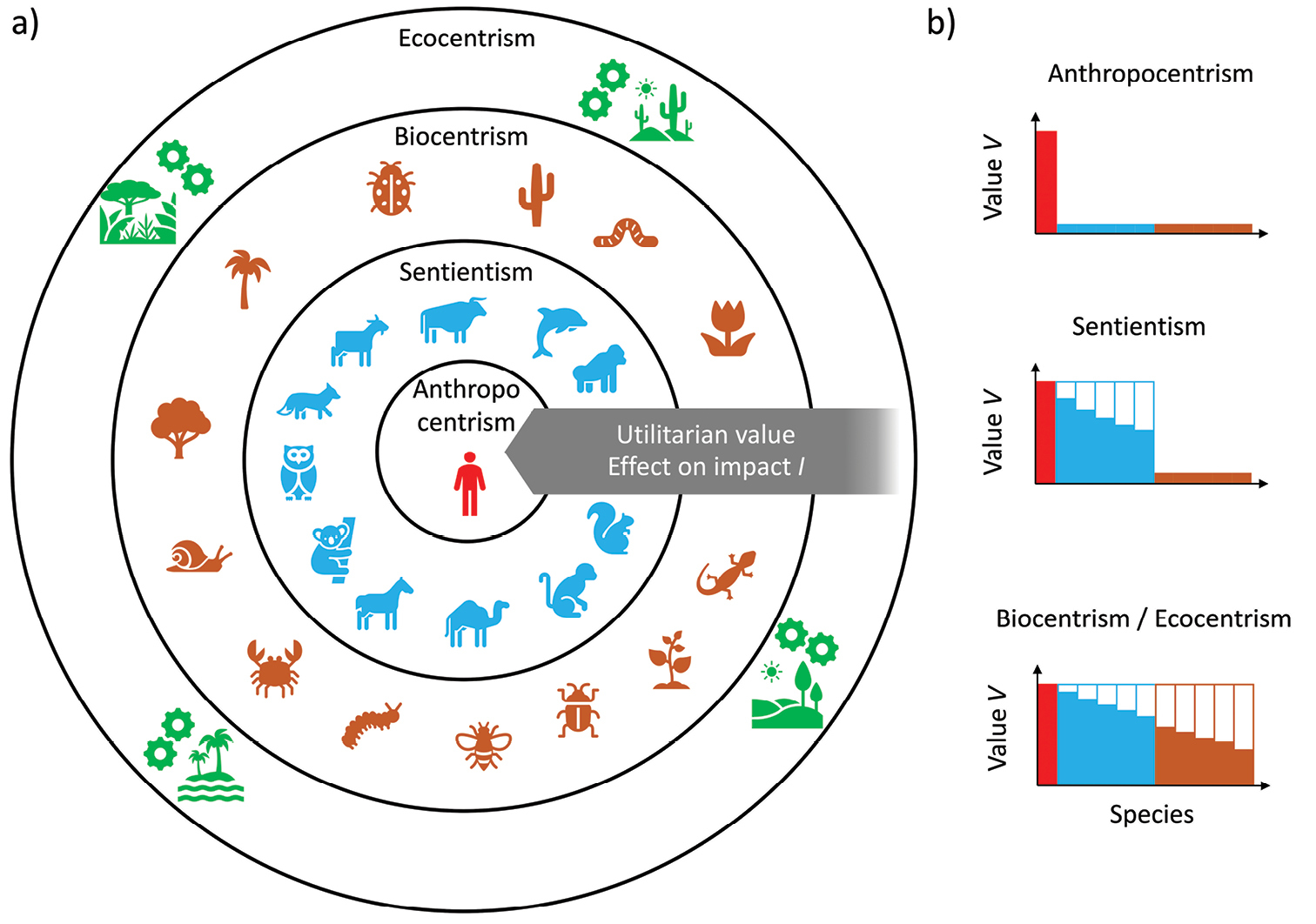
|
||
|
Differences between the moral communities considered by value systems influenced by anthropocentrism, sentientism, biocentrism and ecocentrism (depicted by the nested circles and colours) and how values can differ between members of the different moral communities. a) Anthropocentrism, sentientism and biocentrism all value individuals intrinsically, but consider different moral communities, i.e. the value of an individual depends on the category of species it belongs to, with {humans} ∈ {sentient beings} ∈ {all living organisms}. Species outside of the moral community may have a utilitarian value for species in the moral community (represented by the arrow), which will be reflected by changes in the impact variable. b) The intrinsic value, in combination with contextual factors, defines the inherent value V of an individual or species and the distribution of V will change depending on the set of species included in the moral community. Anthropocentrism, sentientism and biocentrism value individuals from different groups of species. Biocentrism and ecocentrism give value to the same group of species, i.e. all living organisms, but while biocentrism values individuals, ecocentrism values ecological collectives, i.e. species or species assemblages and ecosystems. Note that species can have both an inherent and a utilitarian value. Within the moral community, species may have equal inherent values, but subjective perceptions and different value systems may also assign different values to different species. The skewness of the value distribution then indicates the degree or strength of speciesism with respect to the species of reference, assumed here to be the human species, and is influenced by many factors, including charisma, cultural context, etc. |